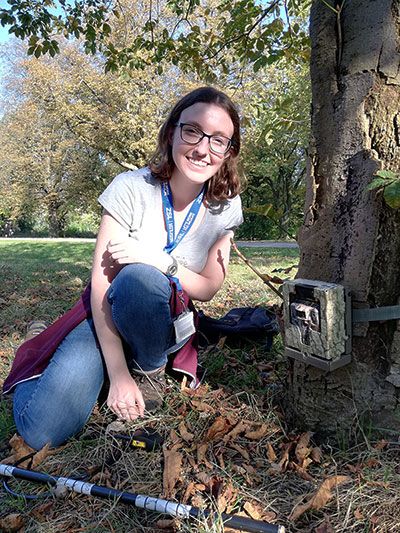Meet the students behind the projects

Our PTES intern alumni now include active conservationists in universities, government agencies, conservation NGOs and ecological consultancies.
Since 2001, when our internship programme began, we’ve supported over 90 bright young graduates take their first steps in the conservation world. They have worked on practical projects helping hedgehogs, water voles, pine martens, bats, adders, bottlenose dolphins, numerous butterflies and a host of other species besides. Our PTES intern alumni now include active conservationists in universities, in government agencies, conservation NGOs and ecological consultancies where they are highly influential and effective.
 Rachel Cates
Rachel Cates
I have a keen interest in ecology and conservation, and as a result of growing up in London, I also have an appreciation of how important it is for people living in urban areas to experience nature, such as encountering a hedgehog in the local park. This led me to urban ecology, a field of increasing relevance due to the rapid growth of urban areas and their potential importance as habitat for many species.
The plight of the British hedgehog was a strong incentive to get involved with the project. I’ve only seen a hedgehog once, despite living in a relatively green area of London. London Hogwatch’s novel approach of using camera traps to map hedgehog occurrence is key to producing an accurate picture of their distribution. This would be a significant step towards providing information needed to halt the decline of one of the UKs most iconic species.
Read the latest on Rachel’s project:
Understanding urban hedgehog populations
 Natalia Fanega
Natalia Fanega
I love travelling and discovering all the new biodiversity to be found. I did my degree in Biology in Spain and given the opportunity to participate in an Erasmus program! It was there in Cyprus where I chose to do Entomology. I really enjoyed it as it gave me the chance to learn more about insect biodiversity, physiology, ecology and distribution. It offered a number of field trips for insect observation where we learnt how to use different equipment and I was surprised by the amount of different species we found! Since then I’ve mainly worked in labs with bacteria and fungus. During this past year I worked on a seed conservation project at the Millennium Seed Bank at the Royal Botanic Gardens Kew in the UK. I believe that species conservation must be multidisciplinary to be successful and therefore I’m really excited to put into practice both my entomology experience and my plant conservation experience for the stag beetle conservation project!
Read the latest on Natalia’s project:
European stag beetle monitoring
Aaron Bhambra
I was inspired to enter the world of conservation from my time growing up in inner city Birmingham. It can be pretty daunting being in an urban jungle at times and you’re lucky to find places where wildlife and greenery thrive. It was only when I began volunteering with environmental charities that I became aware of the world of ancient mysterious species hiding in plain sight. Over 80% of all life on earth is made up of invertebrates. They tend to be the most abundant species in every terrestrial ecosystem on the planet and yet they are vastly misunderstood and often overlooked. I wanted to bring attention to the plight of creatures right on our doorsteps, to teach others about how fascinating even the most industrialised of places can be. Most importantly, I wanted to demonstrate to others the importance of caring about the little things.
Read the latest on Aaron’s project:
Catarina Coutinho
I always had a fascination for our world watching wildlife documentaries thinking I wanted to be inside the screen in the wild and protect it from threats. Now I’m a biologist, so I can appreciate nature not only for its beauty but also for its intrinsic value, by finding threats, understanding them and acting on them.
That’s what I knew I wanted to do when I heard about the decline of amphibians due to emerging diseases. Amphibians are colourful, vibrant and fascinating animals so I want to help conserve them. And then I heard about invasive species. Not only natives have to fight exotics as well as diseases at the same time. The curious part is that in this case the threat was an amphibian. An interesting double threat that I was ready to break down…
Read the latest on Catarina’s project:

